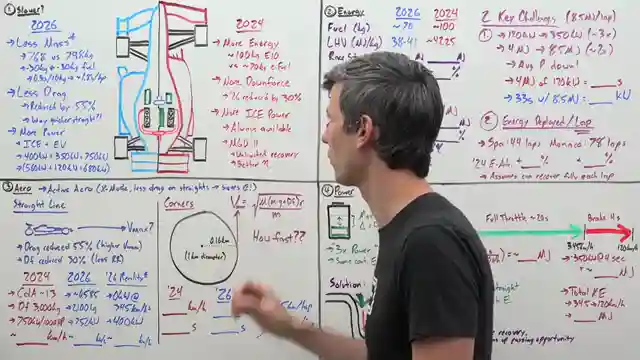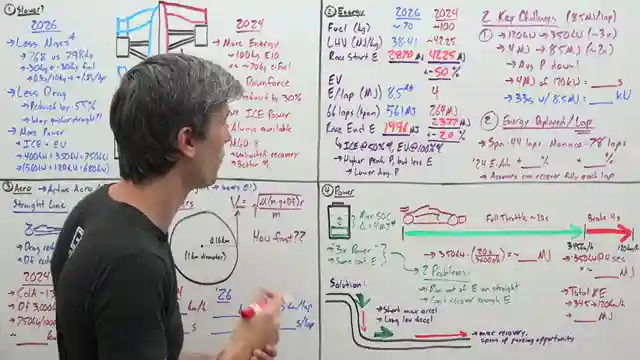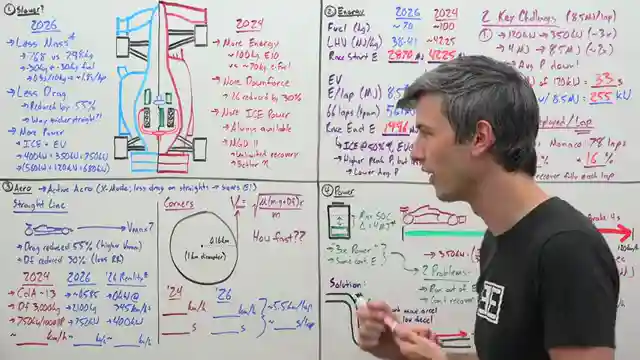Formula 1 2026 Rule Changes: Lighter Cars, Energy Challenges

- Authors
- Published on
- Published on
- Name
- By Dushyant
- (@dishs)
In the world of Formula 1, big changes are on the horizon for 2026, with new rules shaking up the game. The new cars are coming in smaller and lighter, with reduced drag and more power under the hood. But here's the kicker - they'll have less energy on board compared to the old beasts. The old cars boast more downforce, more combustion power, and even an electric motor connected to the turbocharger for that extra oomph. It's a clash of titans, with each generation bringing its own set of advantages to the table.
Now, let's talk about energy - the lifeblood of these racing machines. More energy means more power throughout the race, and the numbers don't lie. The new cars are aiming for less fuel on board, while the old ones pack a bigger punch in terms of energy density. And when it comes to aerodynamics, the new cars are set to revolutionize the game with active aerodynamics, reducing drag and downforce for a higher top speed. But beware, once you hit that 345 km/h mark, it's game over for the electric energy supply.
Power is the name of the game, but with great power comes great responsibility - or in this case, limitations. The maximum state of charge for the battery puts a cap on how much power you can use and recover, leading to strategic challenges on the track. Teams will have to get creative in maximizing their energy usage and recovery to stay ahead of the pack. It's a whole new ball game out there, with new rules, new technologies, and new strategies coming into play. Formula 1 is about to get a whole lot more exciting, and I can't wait to see how it all unfolds on the track.

Image copyright Youtube

Image copyright Youtube

Image copyright Youtube

Image copyright Youtube
Watch Is Formula 1 About To Get Really Slow? on Youtube
Viewer Reactions for Is Formula 1 About To Get Really Slow?
A lot of math in the video
Discussion on F1 speed at different tracks
Concerns about F1 becoming more political
Desire for more innovation and creativity in F1 rules
Excitement for the new F1 rules and potential for more passing
Concerns about slower lap times due to energy recovery strategies
Debate on F1 leadership and direction
Comments on the complexity of the new power units
Hope for more competitive and entertaining races
Comparison of F1 cars to other racing classes
Related Articles

Unveiling Corvette ZR1: Acceleration Secrets and Track Dominance
Engineering Explained reveals the Corvette ZR1's astonishing acceleration, custom launch control secrets, hidden red line, and exceptional handling capabilities, showcasing its dominance on the track.

GM Engine Failures: Thicker Oil Solution Revealed
Engineering Explained uncovers GM's engine failures due to manufacturing defects, recommending a switch to thicker oil for optimal engine performance and longevity.

Exclusive Review: Cadillac Celesteic Unveiled - Luxury & Innovation
Experience the Cadillac Celesteic: a $350,000 flagship sedan with 655 hp, 303 mi range, and unique manufacturing techniques like massive aluminum castings and 3D printed metal parts. Discover the luxury of low-volume production and innovative design in this exclusive review.

Revolutionizing Downforce: McMerry Spearling's Impact on Racing
The McMerry Spearling revolutionizes downforce creation with fan technology, showcasing remarkable efficiency and potential for Formula E and Formula 1.
